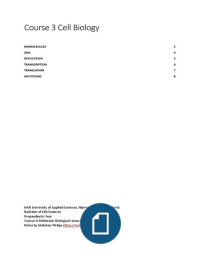Class notes
Course 3 Cell Biology Notes
- Course
- Institution
- Book
Everything from the Cell Biology classes that you need to know for the knowledge and theme tests of course 3, neatly arranged in bullet points. Definitions you should memorize are bold. Note that information from Course 2 is omitted. You need the knowledge from Course 2 to understand this document...
[Show more]



